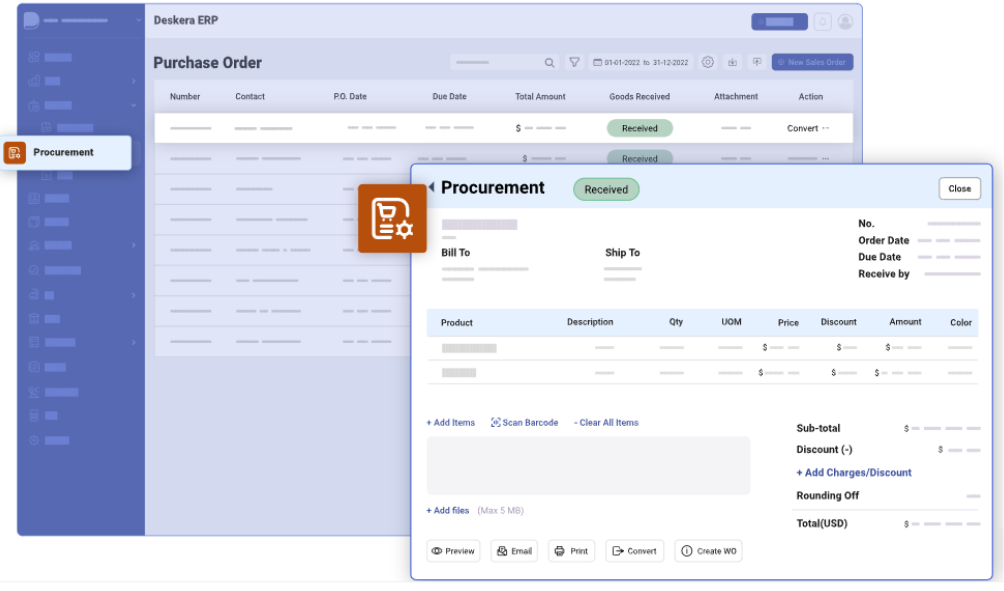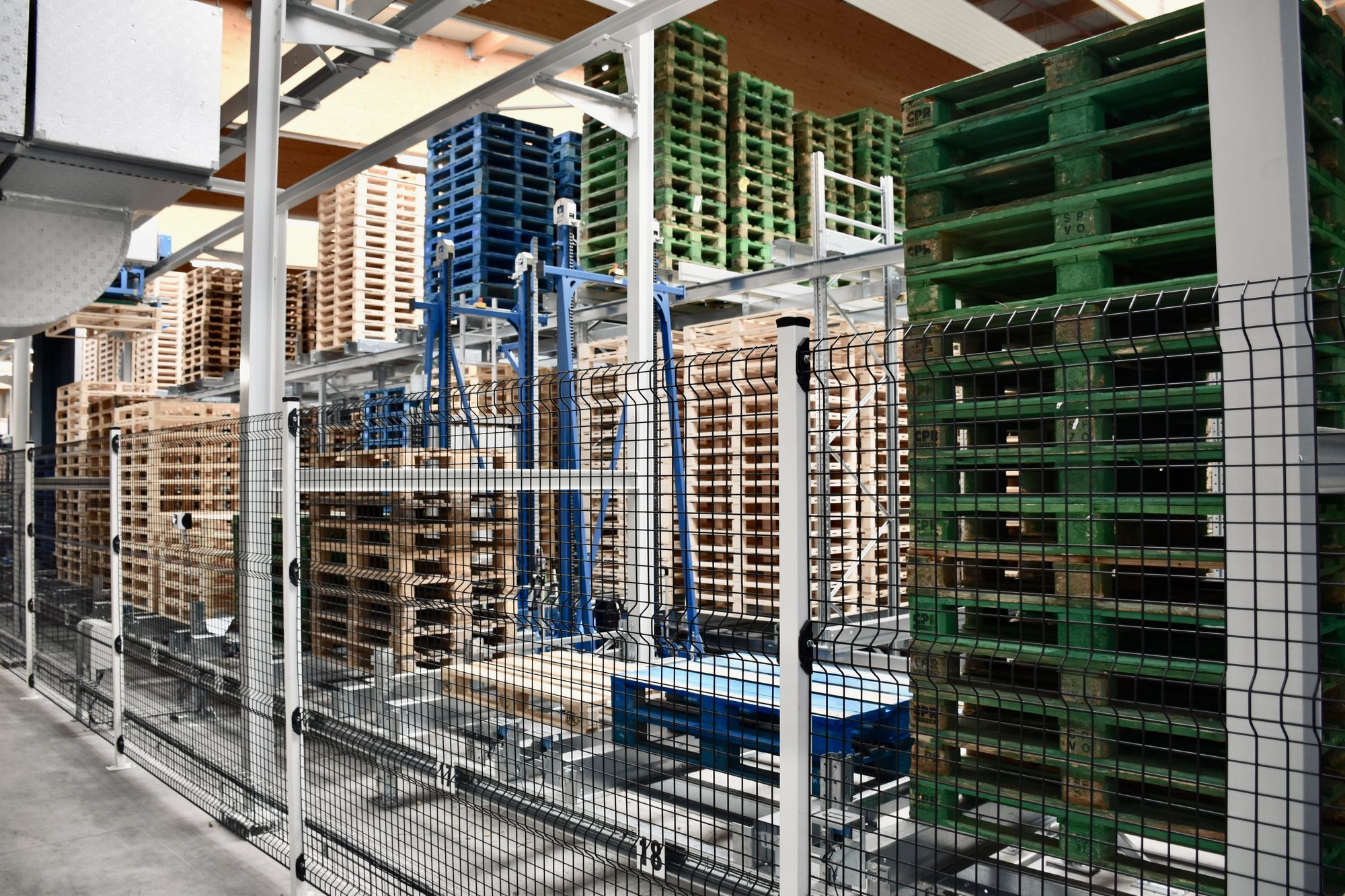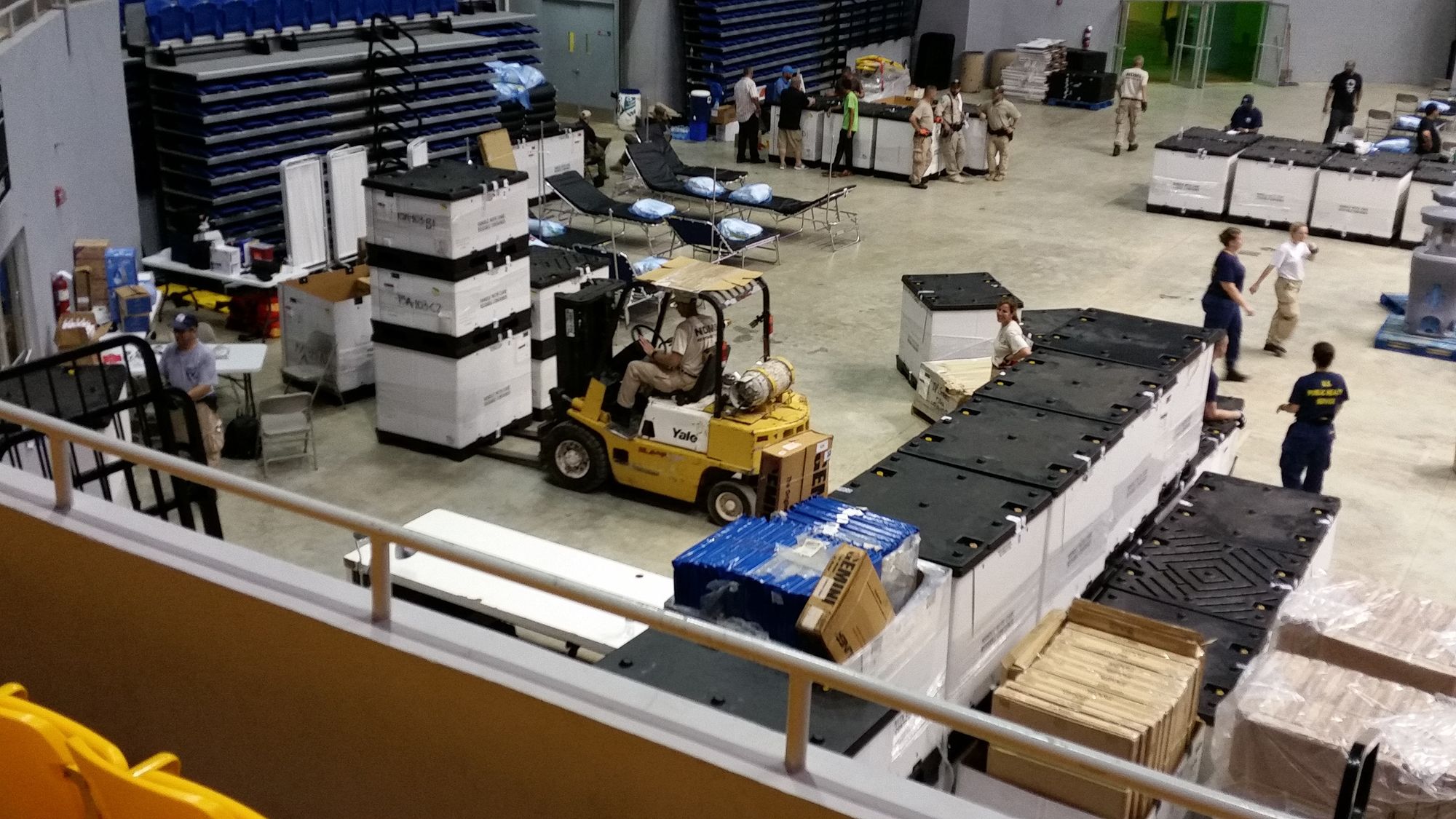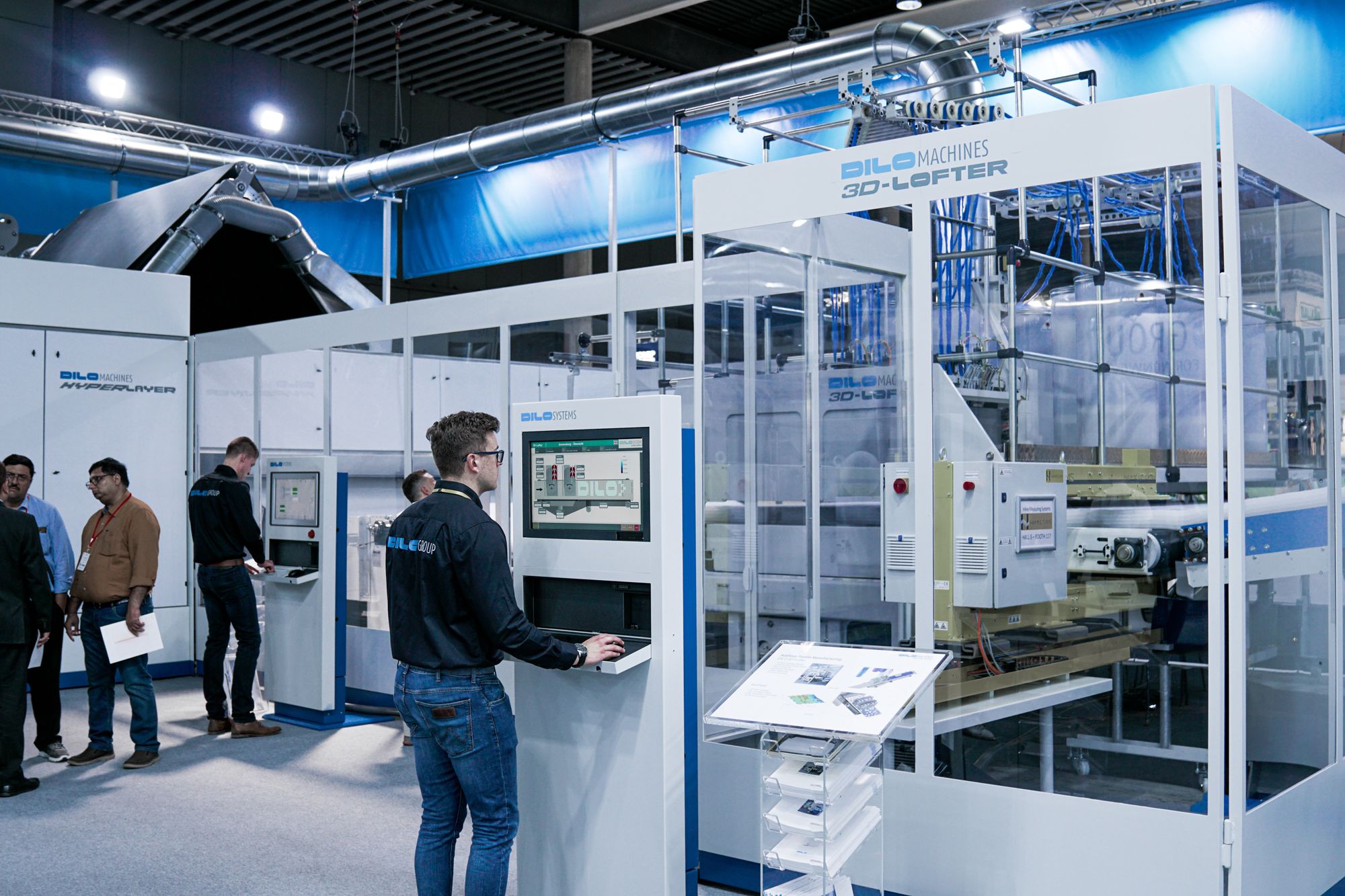As a manufacturing leader, do you seek to understand the top 7 procurement challenges of 2023, so that you can implement the required measures? If yes, then you are on the right page.
In 2023, manufacturing leaders are navigating a dynamic landscape marked by rapid technological advancements, evolving consumer preferences, and a heightened focus on sustainability and efficiency.

Within this intricate tapestry, procurement professionals are encountering a distinct set of challenges that require strategic foresight, adaptability, and innovation. From mitigating supply chain disruptions to driving corporate sustainability, these top seven procurement challenges are shaping the way manufacturing leaders approach their sourcing, supplier relationships, and operational strategies.
In this era of unprecedented change, the ability to overcome these challenges not only ensures the resilience of supply chains but also positions organizations to thrive in an increasingly complex and interconnected global market.
This article delves into each of these challenges, exploring their intricacies and providing valuable insights on how manufacturing leaders can effectively navigate and conquer them in the pursuit of operational excellence and sustainable growth.
The topics covered in this article are:
- What is Procurement?
- Importance of Procurement
- What is Manufacturing?
- All About Manufacturing Leaders
- The Top 7 Procurement Challenges for Manufacturing Leaders in 2023
- How can Deskera Help You with Procurement?
- Key Takeaways
- Related Articles
What is Procurement?
Procurement refers to the process of obtaining goods, services, or works from external sources. It is a fundamental aspect of business operations, encompassing various stages from identifying the need for a product or service to the final acquisition and payment.
Procurement is a strategic function that aims to ensure an organization obtains the right goods and services, in the right quantity and quality, at the right time, and at the right cost.
Key stages in the procurement process typically include:
- Identifying Needs: This is the initial step where the organization identifies what goods or services are required to fulfill its operations or projects.
- Sourcing: Organizations look for potential suppliers, vendors, or contractors who can provide the needed goods or services. This involves evaluating different options and selecting the most suitable ones.
- Vendor Selection: After evaluating potential suppliers, the organization chooses the vendor that offers the best combination of quality, cost, and delivery.
- Negotiation: Negotiations are conducted to finalize the terms of the procurement, including pricing, payment terms, delivery schedules, and any other relevant terms and conditions.
- Purchase Order (PO) Issuance: Once the terms are agreed upon, a purchase order is issued to the selected vendor. The PO outlines the details of the order and serves as a legally binding document.
- Order Fulfillment: The vendor prepares and delivers the goods or services according to the terms specified in the PO.
- Receipt and Inspection: The organization receives the goods or services and inspects them to ensure they meet the specified requirements and quality standards.
- Invoicing and Payment: The vendor issues an invoice for the delivered goods or services. The organization verifies the invoice against the PO and other contractual agreements before making payment.
- Supplier Relationship Management: Building and maintaining a positive relationship with suppliers is essential for long-term success. Effective communication and collaboration can lead to better outcomes and potential cost savings.
- Performance Evaluation: Organizations often assess the performance of their suppliers to ensure they are delivering as expected. This evaluation can help identify areas for improvement and opportunities for optimizing the procurement process.
Procurement can vary widely based on the industry, organization size, and the nature of the goods or services being procured. Effective procurement practices can lead to cost savings, improved efficiency, and enhanced quality, all of which contribute to the overall success of an organization's operations.
Importance of Procurement
Procurement plays a crucial role in the success and sustainability of an organization. Its importance extends beyond simply acquiring goods and services—it impacts various aspects of the business, ranging from cost control to strategic decision-making.
Here are some key reasons why procurement is important:
- Cost Savings: Effective procurement practices can lead to cost savings through negotiations, volume discounts, and efficient supplier selection. By obtaining goods and services at the best possible prices, organizations can improve their financial performance.
- Budget Management: Procurement helps organizations manage their budgets by ensuring that expenses related to goods and services are planned, controlled, and aligned with the overall financial goals of the organization.
- Quality Assurance: Procurement involves evaluating suppliers based on their ability to deliver high-quality goods and services. This ensures that the organization receives products that meet its specifications and quality standards, reducing the risk of defects and operational disruptions.
- Risk Management: Diversifying the supplier base and establishing backup suppliers can mitigate the risks associated with supply chain disruptions, shortages, and unexpected events that could impact the organization's operations.
- Supplier Collaboration: Building strong relationships with suppliers fosters collaboration and innovation. Suppliers can provide insights into market trends, technological advancements, and best practices, leading to improved products and services.
- Strategic Sourcing: Procurement is aligned with the organization's strategic goals. By strategically selecting suppliers and sourcing materials, organizations can enhance their competitive advantage and align their procurement practices with broader business objectives.
- Regulatory Compliance: Many industries are subject to regulations and standards. Procurement ensures that purchased goods and services comply with relevant regulations, helping organizations avoid legal and compliance issues.
- Time Efficiency: Proper procurement planning ensures that goods and services are available when needed, reducing delays in production or project timelines.
- Innovation: Collaborating with suppliers can lead to the introduction of innovative products, processes, and solutions that enhance the organization's offerings and keep it ahead in a competitive market.
- Data-Driven Decision-Making: Procurement generates data related to supplier performance, costs, and trends. Analyzing this data helps organizations make informed decisions to optimize procurement processes and strategies.
- Sustainability and Ethical Considerations: Procurement allows organizations to choose suppliers that align with their sustainability and ethical values. This can include factors like environmental responsibility, fair labor practices, and ethical sourcing of materials.
- Cost Control and Transparency: Proper procurement practices provide transparency into spending and help control unnecessary costs. With clear processes and documentation, organizations can identify areas where cost-cutting measures can be implemented without sacrificing quality.
Overall, procurement has a direct impact on the bottom line of an organization and influences its ability to deliver value to customers and stakeholders. By effectively managing procurement processes, organizations can enhance their competitiveness, operational efficiency, and long-term sustainability.
What is Manufacturing?
Manufacturing is the process of converting raw materials, components, or parts into finished goods through various physical, chemical, or mechanical methods. It involves a series of steps and operations that transform inputs into final products ready for distribution and consumption.
Manufacturing plays a central role in the production of a wide range of goods, from everyday consumer products to complex industrial machinery. The manufacturing process can vary significantly depending on the type of product being made, the industry, and the technologies involved.
Key aspects of the manufacturing process include:
- Design and Engineering: This phase involves conceptualizing the product, creating design specifications, and developing engineering plans that outline how the product will be manufactured. This step can include prototyping and testing to ensure that the design meets functional and performance requirements.
- Material Procurement: Raw materials, components, and parts required for the product are sourced and acquired. These materials could be metals, plastics, textiles, electronics, chemicals, and more.
- Processing and Production: The raw materials are transformed through various processes such as cutting, shaping, forming, machining, molding, and assembly. These processes may involve manual labor, automated machinery, or a combination of both.
- Quality Control and Inspection: Throughout the manufacturing process, quality control measures are implemented to ensure that products meet specified quality standards. Inspection and testing help identify defects and deviations from the desired specifications.
- Assembly: In cases where a product consists of multiple components, parts are assembled together to create the final product. This could involve intricate processes, such as soldering electronic components onto a circuit board or assembling intricate machinery.
- Finishing and Packaging: Once the product is assembled, finishing touches are applied to enhance appearance and functionality. Products are then packaged, labeled, and prepared for distribution.
- Distribution: Finished products are transported from the manufacturing facility to distribution centers, wholesalers, retailers, or directly to consumers.
- Maintenance and Repair: In some cases, manufacturing companies also provide maintenance, repair, and servicing for their products to ensure proper functioning and longevity.
- Automation and Technology: Modern manufacturing often incorporates advanced technologies like robotics, computer numerical control (CNC) machines, additive manufacturing (3D printing), and automated assembly lines to improve efficiency, precision, and consistency.
- Lean Manufacturing and Efficiency: Many manufacturers adopt principles of lean manufacturing to eliminate waste, optimize processes, and enhance productivity. Continuous improvement practices are often employed to refine manufacturing operations over time.
Manufacturing is a vital sector of the economy, contributing to economic growth, job creation, and technological advancement. It spans various industries, including automotive, electronics, aerospace, pharmaceuticals, textiles, food and beverage, and more. The efficiency, quality, and innovation within the manufacturing process directly impact a company's competitiveness and ability to meet customer demands.
All About Manufacturing Leaders
"Manufacturing leaders" refers to individuals, organizations, or entities that hold prominent positions, influence, or play a leading role within the manufacturing industry. These leaders are often recognized for their expertise, innovation, and contributions to shaping the direction of manufacturing practices, technologies, and strategies.
Manufacturing leaders can include both individuals who have made significant contributions to the field and companies that are at the forefront of manufacturing innovation. They drive advancements, set industry standards, and inspire others within the manufacturing sector.
Characteristics of manufacturing leaders may include:
- Innovation: Manufacturing leaders are known for introducing new technologies, processes, and products that push the boundaries of what's possible in the industry. They often pioneer breakthroughs that lead to improved efficiency, quality, and competitiveness.
- Expertise: Leaders in manufacturing have deep knowledge and expertise in their field. They understand the complexities of production processes, materials, supply chain management, and other key aspects of manufacturing.
- Vision: Manufacturing leaders have a clear vision for the future of the industry. They anticipate trends, identify opportunities, and create strategies to adapt to changing market conditions and customer demands.
- Strategic Thinking: Successful manufacturing leaders are strategic thinkers who make informed decisions to drive growth, optimize operations, and achieve long-term sustainability.
- Collaboration: Collaboration is a hallmark of effective leadership in manufacturing. Leaders often work with teams of engineers, designers, technicians, and other experts to bring their ideas to fruition.
- Continuous Improvement: Manufacturing leaders embrace the principles of continuous improvement and are committed to refining processes and products over time to achieve better outcomes.
- Impact: Their work has a significant impact on the industry and the broader economy. They may create jobs, influence industry trends, and contribute to economic growth.
- Communication: Effective communication is crucial for manufacturing leaders to convey their vision, goals, and strategies to their teams and stakeholders.
- Global Perspective: Many manufacturing leaders operate on a global scale, considering international markets, supply chains, and trends in their decision-making.
- Ethics and Sustainability: Manufacturing leaders often prioritize ethical practices and sustainability initiatives, considering the social and environmental impacts of their decisions.
Manufacturing leaders can be found in various segments of the industry, such as automotive manufacturing, aerospace, electronics, pharmaceuticals, and more. They may be founders or CEOs of innovative manufacturing companies, influential researchers, policymakers who shape industry regulations, or thought leaders who share insights and knowledge through conferences, publications, and educational initiatives.
The Top 7 Procurement Challenges for Manufacturing Leaders in 2023
Procurement challenges are obstacles or difficulties that organizations encounter while attempting to acquire goods, services, or works from external suppliers or vendors. These challenges can vary based on factors such as industry, market conditions, organizational size, and global events. Overcoming procurement challenges is essential for maintaining efficient operations, controlling costs, and ensuring the availability of the necessary resources.
The top 7 procurement challenges for manufacturing leaders in 2023 are:
Managing Risk
Managing risk is a significant procurement challenge that manufacturing leaders often face. Procurement activities are subject to various risks that can impact the supply chain, operational efficiency, and overall business continuity. Here's a closer look at how risk management poses a challenge in procurement for manufacturing leaders:
- Supply Chain Disruptions: Manufacturing leaders must be prepared for supply chain disruptions caused by factors like natural disasters, political instability, economic crises, and pandemics. These disruptions can lead to shortages of critical materials, components, and finished products, affecting production schedules and customer satisfaction.
- Supplier Reliability: Relying on suppliers that are financially unstable or have inconsistent performance can result in delays, subpar quality, and production interruptions. Manufacturers need to assess the financial health and reliability of suppliers and establish backup options to mitigate these risks.
- Quality Assurance: Poor-quality materials or components from suppliers can lead to defective products, recalls, and damage to the company's reputation. Ensuring consistent quality requires rigorous supplier qualification, monitoring, and inspection processes.
- Geopolitical and Trade Risks: Global trade tensions, tariffs, and changing trade regulations can impact the cost, availability, and sourcing of materials. Manufacturers must monitor geopolitical developments and adjust procurement strategies accordingly.
- Currency Fluctuations: Manufacturers sourcing materials internationally are exposed to currency exchange rate fluctuations, which can affect procurement costs and profitability. Hedging strategies or supplier contracts that address currency risk may be necessary.
- Data Security and Cybersecurity: As procurement processes become more digitized, the risk of data breaches and cyberattacks increases. Protecting sensitive procurement data and maintaining cybersecurity measures are critical to prevent disruptions and data breaches.
- Supplier Capacity and Demand Variability: Fluctuating demand and supplier capacity constraints can lead to production delays and supply shortages. Manufacturers need to have strategies in place to manage demand variability and secure sufficient supplier capacity.
- Compliance and Regulatory Risks: Failure to comply with regulations related to product quality, safety, environmental standards, and ethical sourcing can result in legal penalties and reputational damage. Manufacturers must ensure that suppliers meet all necessary compliance requirements.
- Contractual Risks: Inadequate or poorly drafted contracts can lead to misunderstandings, disputes, and delivery failures. Robust contract management, including clear terms, conditions, and dispute resolution mechanisms, is essential.
- Strategic Risks: Poor alignment between procurement and overall business strategies can result in missed opportunities, wasted resources, and reduced competitiveness. Manufacturers need to ensure that procurement strategies align with broader organizational goals.
Managing risk in procurement is a critical task for manufacturing leaders to ensure the stability of their supply chains and business operations. Here's a step-by-step approach to overcoming the challenge of managing risk in procurement:
Risk Assessment and Identification:
- Supplier Risk Profiling: Evaluate suppliers based on financial stability, past performance, geographical location, and other relevant factors.
- Supply Chain Mapping: Understand the end-to-end supply chain to identify vulnerabilities and potential points of failure.
Diversification and Redundancy:
- Supplier Diversification: Work with multiple suppliers for critical components to reduce dependence on a single source.
- Dual Sourcing: Consider dual sourcing for essential materials to have a backup supplier in case of disruptions.
Supply Chain Resilience Planning:
- Scenario Analysis: Model potential disruptions and their impact on your supply chain. Develop response plans for different scenarios.
- Contingency Plans: Create detailed contingency plans that outline steps to take when disruptions occur.
Supplier Collaboration and Communication:
- Regular Communication: Maintain open and regular communication with suppliers to stay informed about potential risks and challenges.
- Risk Sharing: Collaborate with suppliers on risk mitigation strategies and allocate responsibilities.
Data Analytics and Predictive Tools:
- Advanced Analytics: Utilize data analytics to identify patterns and early warning signs of potential disruptions.
- Predictive Tools: Implement predictive tools that use historical and real-time data to forecast potential risks.
Risk Mitigation Strategies:
- Safety Stock: Maintain safety stock of critical materials to cushion against supply disruptions.
- Buffer Inventory: Create buffer inventory for high-demand or essential items to avoid stockouts.
Supply Chain Visibility and Transparency:
- Real-time Monitoring: Implement technologies that provide real-time visibility into your supply chain to detect disruptions early.
- Supplier Audits: Conduct regular audits to ensure suppliers adhere to quality and compliance standards.
Contract Management and Legal Safeguards:
- Clear Contract Terms: Define contract terms that address potential risks and disruptions, including force majeure clauses.
- Legal Review: Involve legal experts to review and advise on contract language related to risk management.
Continuous Improvement and Learning:
- Post-Event Analysis: Analyze past disruptions to identify areas for improvement and strengthen risk mitigation strategies.
- Benchmarking: Learn from industry best practices and benchmark against peers to enhance your risk management approach.
Executive Support and Buy-In:
- Leadership Alignment: Obtain support from top leadership to allocate resources and prioritize risk management initiatives.
- Reporting to Leadership: Provide regular reports and updates to senior management about risk management efforts and outcomes.
Remember that risk management is an ongoing effort that requires continuous monitoring, evaluation, and adaptation. By implementing these strategies, manufacturing leaders can effectively mitigate supply chain risks and ensure the resilience of their procurement processes.
Reducing Cost
Reducing costs is a perennial and significant procurement challenge for manufacturing leaders. It involves finding ways to streamline procurement processes, negotiate favorable terms with suppliers, and optimize the allocation of resources to achieve cost savings without compromising on quality or operational efficiency.
Here's a closer look at how cost reduction poses a challenge in procurement for manufacturing leaders:
- Balancing Cost and Quality: While cost reduction is a primary goal, manufacturing leaders must also ensure that cost-cutting measures do not lead to a decline in product quality. Finding the right balance between cost and quality is crucial to maintaining customer satisfaction and brand reputation.
- Supplier Negotiations: Negotiating with suppliers to obtain the best possible prices while maintaining a mutually beneficial relationship can be challenging. Manufacturers need to leverage their negotiation skills, market insights, and competitive bids to secure cost-effective deals.
- Total Cost of Ownership: Beyond the initial purchase price, there are other costs associated with procurement, such as shipping, handling, maintenance, and disposal. Manufacturers need to consider the total cost of ownership when evaluating supplier offers.
- Supplier Rationalization: Manufacturers often work with multiple suppliers for the same type of product. Supplier rationalization involves consolidating purchases with fewer, strategically chosen suppliers to leverage economies of scale and negotiation power.
- Demand Forecasting: Accurate demand forecasting helps manufacturers align procurement with actual needs, reducing overstocking or understocking issues that can lead to unnecessary costs.
- Inventory Management: Efficient inventory management ensures that materials and components are available when needed, minimizing storage costs, waste, and the risk of obsolescence.
- Process Efficiency: Streamlining procurement processes, such as purchase requisition, approval workflows, and order processing, can reduce administrative overhead and improve efficiency.
- Sourcing Alternatives: Exploring alternative sourcing options, such as local suppliers or alternative materials, can lead to cost savings. However, evaluating these alternatives requires careful analysis to ensure they meet quality and performance requirements.
- Technology Adoption: Leveraging procurement technologies like e-procurement platforms, spend analytics tools, and contract management systems can enhance visibility, automate processes, and identify cost-saving opportunities.
- Collaboration with Suppliers: Building strong relationships with suppliers can lead to collaborative cost-saving initiatives, such as joint process improvements, sharing of cost-reduction ideas, and exploring value engineering opportunities.
- Benchmarking: Comparing procurement practices and costs with industry benchmarks and best practices can identify areas where improvements can be made.
- Continuous Improvement: Implementing a culture of continuous improvement within procurement teams encourages the regular review of processes and strategies to identify and address cost-saving opportunities.
While reducing costs is essential, it's important to approach this challenge strategically to avoid negatively impacting product quality, supplier relationships, and overall business performance. Balancing cost reduction efforts with long-term sustainability and the organization's strategic goals is key to achieving success in procurement.
Overcoming the challenge of reducing costs in procurement while maintaining quality and operational efficiency requires a strategic and multifaceted approach. Here's a step-by-step guide for manufacturing leaders:
Spend Analysis:
- Data Collection: Gather data on all procurement spending to identify areas where cost reduction is feasible.
- Categorization: Categorize spending to understand which categories offer the most potential for savings.
Supplier Negotiation and Collaboration:
- Negotiation Strategies: Develop effective negotiation strategies to secure better pricing and terms from suppliers.
- Collaborative Approach: Collaborate with key suppliers to identify mutual cost-saving opportunities.
Total Cost of Ownership (TCO):
- Holistic Cost Analysis: Consider all costs associated with a product or service, including acquisition, maintenance, transportation, and disposal.
- Make vs. Buy Analysis: Evaluate whether it's more cost-effective to produce internally or outsource.
Supplier Rationalization and Consolidation:
- Supplier Evaluation: Evaluate suppliers based on factors like performance, quality, and total cost.
- Consolidation: Consolidate spending with fewer, strategic suppliers to leverage volume discounts.
Demand Management and Forecasting:
- Accurate Forecasting: Use historical data and market trends to improve demand forecasting accuracy.
- Demand Smoothing: Implement strategies to reduce demand variability and align it with production capacity.
Process Efficiency and Automation:
- Process Mapping: Identify inefficiencies in procurement processes and streamline workflows.
- Automation: Implement procurement automation tools to reduce manual tasks and improve efficiency.
Value Analysis and Engineering:
- Product Design: Collaborate with suppliers to identify opportunities for design improvements that reduce costs without compromising quality.
- Material Substitution: Explore alternative materials that meet quality requirements but offer cost savings.
Competitive Bidding:
- E-Sourcing Platforms: Use e-sourcing tools to facilitate competitive bidding and negotiation among suppliers.
- Auction Events: Conduct online auctions to encourage suppliers to offer their best prices.
Contract Management and Compliance:
- Negotiation Clauses: Ensure that contracts include favorable terms, pricing adjustments, and clauses for cost control.
- Contract Compliance: Monitor and enforce compliance with contract terms to prevent cost leakage.
Continuous Improvement and Benchmarking:
- Regular Review: Continuously review procurement strategies and practices to identify additional cost-saving opportunities.
- Benchmarking: Benchmark against industry best practices and peers to identify areas for improvement.
Employee Engagement and Training:
- Empower Procurement Teams: Involve procurement professionals in cost-saving initiatives and empower them to contribute ideas.
- Skills Enhancement: Provide training on negotiation, data analysis, and cost management techniques.
Management Support and KPIs:
- Leadership Alignment: Gain leadership support for cost reduction initiatives and align them with business goals.
- Performance Metrics: Establish key performance indicators (KPIs) to track cost reduction progress.
By implementing these strategies and fostering a culture of continuous improvement, manufacturing leaders can successfully reduce procurement costs while enhancing overall operational efficiency and maintaining quality standards.
Delivering on the Evolving Value of Procurement
Delivering on the evolving value of procurement refers to the challenge that manufacturing leaders face in adapting and demonstrating the broader strategic contributions that a well-managed procurement function can provide beyond traditional cost savings.
Procurement has evolved from a transactional, cost-focused activity to a strategic function that can drive innovation, risk management, supplier collaboration, and overall business growth. However, effectively communicating and realizing this evolving value can be a challenge.
Here's a closer look at this challenge:
- Strategic Alignment: Manufacturing leaders need to align the procurement function with the broader strategic goals of the organization. This involves ensuring that procurement strategies support business growth, innovation, sustainability, and other strategic imperatives.
- Change Management: Shifting the perception of procurement from a cost center to a value-generating function requires change management efforts. Employees and stakeholders need to understand and embrace the expanded role of procurement.
- Supplier Collaboration: Demonstrating value through supplier collaboration involves working closely with suppliers to drive innovation, co-development of products, and joint cost-saving initiatives. Building these collaborative relationships can be challenging.
- Innovation and New Product Development: Procurement can play a role in innovation by collaborating with suppliers to identify new materials, technologies, and processes that can enhance products or create competitive advantages.
- Risk Management: Procurement contributes to risk mitigation by ensuring supply chain resilience, identifying alternative sourcing options, and assessing supplier financial stability. Communicating the value of risk reduction to stakeholders can be complex.
- Measuring Value Beyond Cost Savings: Developing metrics and KPIs that capture the broader value of procurement, such as supplier performance, lead time reduction, and innovation contribution, can be challenging. These metrics need to align with strategic goals.
- Communication and Advocacy: Procurement leaders must effectively communicate the value and strategic contributions of procurement to top management, colleagues, and stakeholders across the organization.
- Technology Adoption and Integration: Evolving procurement's value often involves adopting and integrating new technologies. Ensuring that these technologies align with strategic objectives and deliver measurable value is essential.
- Skill Development: Procurement teams need to develop a mix of skills beyond traditional procurement practices, including negotiation, data analysis, relationship management, and strategic thinking, to deliver on evolving value.
- Continuous Improvement: Just as procurement continuously improves its operational practices, it also needs to consistently demonstrate its evolving value through ongoing initiatives, innovations, and strategic contributions.
To overcome the challenge of delivering on the evolving value of procurement and demonstrating its strategic contributions, manufacturing leaders can follow these steps:
Strategic Alignment:
- Align with Business Goals: Ensure that procurement strategies and initiatives are directly aligned with the overall business goals and objectives.
Communication and Education:
- Internal Communication: Clearly communicate the strategic value of procurement to employees across the organization. Highlight how procurement supports innovation, risk management, sustainability, and other strategic imperatives.
- Stakeholder Engagement: Engage with cross-functional teams, senior management, and stakeholders to understand their needs and demonstrate how procurement can contribute to their objectives.
Performance Metrics and Reporting:
- Define Relevant KPIs: Develop Key Performance Indicators (KPIs) that measure the strategic contributions of procurement, such as supplier collaboration, innovation, risk reduction, and sustainability impact.
- Regular Reporting: Provide regular reports and updates to demonstrate how procurement is delivering value beyond cost savings.
Supplier Collaboration and Innovation:
- Supplier Engagement: Foster collaborative relationships with key suppliers to drive joint innovation initiatives, co-development of products, and value engineering.
- Innovation Showcases: Highlight successful examples of how procurement-driven innovation has led to product improvements, cost savings, or competitive advantages.
Technology Integration:
- Technology Adoption: Leverage procurement technologies to enhance data analytics, supplier collaboration, and reporting capabilities. Showcase how technology enables better decision-making and strategic insights.
Continuous Learning and Skill Development:
- Talent Development: Provide training and resources to equip procurement teams with the skills needed for strategic activities such as data analysis, negotiation, and relationship management.
- Leadership Development: Develop leadership skills within the procurement team to drive strategic thinking and influence across the organization.
Change Management and Cultural Shift:
- Championing Change: Secure support from top management to champion the transformation of procurement into a strategic function.
- Cultural Transformation: Foster a culture of innovation, adaptability, and openness to change within the procurement team.
Case Studies and Success Stories:
- Showcase Impact: Share case studies and success stories that highlight how procurement initiatives have directly contributed to achieving strategic objectives.
External Benchmarking:
- Industry Comparisons: Benchmark your procurement practices against industry best practices to identify areas for improvement and validate your strategic approach.
Continuous Improvement:
- Regular Assessment: Continuously assess and refine your procurement strategies to ensure they remain aligned with the evolving needs of the business.
By effectively implementing these strategies, manufacturing leaders can demonstrate the evolving value of procurement as a strategic function that drives innovation, risk management, supplier collaboration, and overall business growth.
Accelerating Procurement Digital Transformation
Accelerating procurement digital transformation is a significant challenge for manufacturing leaders. Digital transformation in procurement involves leveraging technology to streamline processes, enhance data-driven decision-making, and improve collaboration with suppliers. However, implementing and managing these changes can be complex and require careful planning.
Here's a closer look at this challenge:
- Legacy Systems and Resistance to Change: Manufacturing companies might have legacy systems and established processes that are resistant to change. Convincing stakeholders to embrace new technologies and processes can be a challenge.
- Integration Complexity: Integrating new digital solutions with existing systems (such as ERP systems) can be complex and time-consuming. Ensuring seamless data flow between different systems is essential for accurate decision-making.
- Data Management and Security: Digital transformation involves collecting and analyzing vast amounts of data. Ensuring data accuracy, security, and compliance with data protection regulations is a critical challenge.
- Technology Selection: Choosing the right technology solutions that align with the organization's needs and long-term strategy can be challenging. Manufacturing leaders need to evaluate various options and vendors.
- Change Management: Implementing new technologies requires change management efforts to ensure that employees understand and adopt the new tools and processes effectively.
- Training and Skill Development: Transitioning to digital tools requires employees to acquire new skills. Manufacturing leaders need to invest in training programs to ensure that their teams are proficient in using the new technologies.
- Cost and ROI: Implementing new digital solutions requires investment. Manufacturing leaders need to ensure that the expected return on investment (ROI) justifies the costs.
- Supplier Collaboration: Digital transformation can enhance supplier collaboration, but it also requires suppliers to adapt to new processes and tools. Ensuring alignment and collaboration across the supply chain can be challenging.
- Continuous Improvement: Digital transformation is an ongoing process that requires continuous improvement. Manufacturers need to stay up-to-date with emerging technologies and refine their digital strategies accordingly.
- Customization and Scalability: Digital solutions need to be tailored to the specific needs of the manufacturing industry and should be scalable to accommodate future growth.
To overcome the challenge of accelerating procurement digital transformation, manufacturing leaders can take the following steps:
Clear Digital Transformation Strategy:
- Develop a comprehensive strategy that outlines the goals, priorities, and roadmap for procurement digital transformation.
- Align the strategy with the organization's overall business objectives.
Leadership Support and Sponsorship:
- Secure support from top management to ensure commitment to the digital transformation journey.
- Assign a dedicated leader or team to oversee and drive the transformation efforts.
Technology Assessment and Selection:
- Evaluate existing technology systems and identify gaps that need to be addressed.
- Select appropriate digital tools and platforms that align with your procurement goals.
Change Management and Communication:
- Communicate the reasons for digital transformation to all stakeholders and address any concerns or resistance.
- Develop a change management plan that includes training, communication strategies, and support mechanisms for employees.
Data Management and Integration:
- Implement data management practices to ensure data accuracy, quality, and security.
- Integrate data sources and systems to create a unified view of procurement-related information.
Pilot Projects and Iterative Approach:
- Start with pilot projects that demonstrate the benefits of digital transformation on a smaller scale.
- Use the lessons learned from pilot projects to refine and scale your transformation initiatives.
Collaboration with IT Department:
- Work closely with the IT department to ensure the smooth integration of new technologies with existing systems.
- Collaborate to address any technical challenges or compatibility issues.
Data Analytics and Reporting:
- Implement advanced data analytics tools to gain insights into procurement trends, supplier performance, and cost optimization.
- Develop interactive dashboards and reports to facilitate data-driven decision-making.
Supplier Collaboration and Digital Platforms:
- Collaborate with suppliers to integrate digital platforms for real-time communication, order tracking, and collaboration.
- Implement e-sourcing and e-procurement platforms to streamline supplier interactions.
Training and Skill Development:
- Provide training programs to ensure that your procurement team is proficient in using the new digital tools.
- Invest in upskilling your team with skills such as data analysis, technology proficiency, and process automation.
Measurement and Continuous Improvement:
- Establish key performance indicators (KPIs) to measure the impact of digital transformation on procurement efficiency, cost savings, and supplier collaboration.
- Regularly assess your progress, gather feedback, and make continuous improvements to your digital strategy.
Vendor Collaboration and Support:
- Collaborate closely with technology vendors to ensure successful implementation and address any challenges.
- Leverage vendor expertise to optimize the use of digital tools for procurement processes.
By following these steps, manufacturing leaders can accelerate their procurement digital transformation, streamline processes, enhance data-driven decision-making, and create a more efficient and agile procurement function.
Driving Corporate Sustainability
Driving corporate sustainability through procurement is a significant challenge for manufacturing leaders, especially in today's environment where environmental and social considerations are becoming increasingly important. Corporate sustainability involves integrating environmental, social, and ethical considerations into procurement practices to minimize negative impacts and promote responsible business practices.
Here's a closer look at this challenge:
- Supplier Sustainability Assessment: Assessing the sustainability practices of suppliers can be challenging due to the need for accurate and comprehensive data on their environmental, social, and ethical performance.
- Complex Supply Chains: Manufacturing supply chains can be complex, involving multiple tiers of suppliers. Ensuring sustainability across the entire supply chain requires visibility and collaboration at each level.
- Balancing Cost and Sustainability: Sustainable practices might come with higher costs initially, which can pose a challenge in a competitive market where cost considerations are crucial.
- Lack of Standards: The absence of universal sustainability standards can make it difficult to measure and compare suppliers' sustainability performance accurately.
- Risk Management: Sustainability risks, such as reputational damage from association with unsustainable practices, must be managed effectively to avoid negative impacts on the business.
- Innovative Procurement: Embracing sustainable procurement practices may require finding innovative suppliers who specialize in environmentally friendly or socially responsible products and services.
- Education and Awareness: Ensuring that employees and stakeholders understand the importance of sustainability and its impact on procurement decisions can be a challenge.
- Performance Monitoring: Regularly monitoring and reporting on sustainability metrics and performance across the supply chain can be resource-intensive.
- Regulatory Compliance: Adhering to evolving environmental and ethical regulations while maintaining efficient procurement processes can be complex.
- Supplier Engagement: Collaborating with suppliers to drive sustainable improvements may require time, resources, and a willingness to share best practices.
To overcome the challenge of driving corporate sustainability through procurement, manufacturing leaders can implement the following strategies:
Sustainability Strategy and Goals:
- Develop a clear sustainability strategy that outlines the organization's goals, priorities, and commitments to sustainability in procurement.
- Align the strategy with overall corporate sustainability objectives.
Supplier Sustainability Assessment:
- Implement a robust supplier assessment process that evaluates suppliers based on their environmental, social, and ethical practices.
- Include sustainability criteria in supplier selection and evaluation processes.
Supplier Collaboration:
- Collaborate closely with key suppliers to jointly identify sustainability improvement opportunities.
- Work together to drive innovations in sustainable materials, processes, and practices.
Sustainable Product Design:
- Collaborate with suppliers and design teams to integrate sustainability principles into product design and development.
- Emphasize the use of eco-friendly materials, energy-efficient designs, and recyclability.
Circular Economy Practices:
- Promote circular economy practices by encouraging suppliers to design products for longevity, repairability, and recyclability.
- Explore opportunities for product take-back, recycling, and remanufacturing.
Transparency and Traceability:
- Enhance supply chain visibility to track the origin and sustainability of materials and products.
- Use technology solutions like blockchain to ensure transparency and traceability.
Sustainable Packaging:
- Evaluate and adopt sustainable packaging solutions that minimize waste and environmental impact.
- Encourage suppliers to use eco-friendly packaging materials.
Sustainability Metrics and Reporting:
- Define key performance indicators (KPIs) to measure the sustainability impact of procurement activities.
- Develop sustainability reports that communicate the progress and achievements to stakeholders.
Employee Education and Engagement:
- Educate procurement teams and employees about the importance of sustainability and its integration into procurement decisions.
- Foster a culture of sustainability awareness and responsibility.
Innovation and Collaboration Forums:
- Organize forums, workshops, and conferences that bring together suppliers, experts, and stakeholders to discuss sustainable practices and solutions.
Supplier Development Programs:
- Launch supplier development programs to help suppliers enhance their sustainability practices.
- Provide resources, guidelines, and support to help suppliers meet sustainability requirements.
External Certifications and Standards:
- Encourage suppliers to obtain relevant sustainability certifications and adhere to established industry standards.
- Recognize and reward suppliers for their sustainability achievements.
By implementing these strategies, manufacturing leaders can effectively drive corporate sustainability through procurement, reduce environmental and social impacts, and contribute to a more sustainable future.
Mitigating Talent Disruption
Mitigating talent disruption is a significant challenge for manufacturing leaders, especially in the context of procurement. As the industry evolves, the procurement function requires a mix of traditional procurement skills and new capabilities such as data analysis, technology proficiency, and strategic thinking. Here's a closer look at this challenge:
- Skills Gap: Traditional procurement skills, such as negotiation and supplier management, are still crucial. However, there's a growing need for skills in data analytics, digital tools, risk management, sustainability, and strategic decision-making.
- Digital Transformation: The shift towards digital procurement tools and technologies requires employees to adapt and learn new ways of working. Ensuring that the workforce is comfortable with these tools can be challenging.
- Change Management: Transitioning from traditional procurement practices to more strategic and technology-driven approaches requires effective change management to address resistance and ensure buy-in from employees.
- Recruitment Challenges: Attracting and retaining talent with the required mix of skills can be difficult due to competition for qualified candidates in a rapidly changing job market.
- Knowledge Transfer: The retirement of experienced procurement professionals can lead to a loss of institutional knowledge and expertise. Ensuring effective knowledge transfer to newer employees is crucial.
- Training and Development: Providing ongoing training and professional development opportunities is essential to upskill the existing workforce and keep up with industry trends.
- Multi-Generational Workforce: Managing a multi-generational workforce with varying levels of digital literacy and preferences for work styles can be complex.
- Remote Work: The shift towards remote or hybrid work arrangements requires adjustments in how teams collaborate, communicate, and execute procurement processes.
To mitigate the challenge of talent disruption in procurement, manufacturing leaders can adopt the following strategies:
Skills Assessment and Gap Analysis:
- Assess the existing skills of your procurement team to identify strengths and areas for improvement.
- Determine the skills needed for the evolving procurement landscape.
Talent Development and Upskilling:
- Invest in training programs to upskill the existing procurement workforce.
- Offer workshops, courses, and certifications that cover both traditional and new procurement skills.
Hiring and Recruitment Strategies:
- Develop comprehensive job descriptions that reflect the evolving skill requirements.
- Use targeted recruitment strategies to attract candidates with the necessary skill sets.
Succession Planning and Knowledge Transfer:
- Identify key roles and individuals within your procurement team.
- Implement succession plans to ensure a smooth transition of responsibilities and knowledge transfer.
Flexible Work Arrangements:
- Offer flexible work arrangements, such as remote work or flexible hours, to attract and retain talent with diverse preferences.
Cross-Functional Collaboration:
- Foster collaboration between procurement and other departments to encourage knowledge sharing and skill development.
Collaboration with Educational Institutions:
- Partner with universities and training institutions to develop specialized programs that align with the skills required in modern procurement.
Mentorship and Coaching:
- Pair experienced procurement professionals with newer employees for mentorship and knowledge transfer.
- Provide coaching and feedback to help employees develop new skills.
Technology Adoption and Training:
- Provide training on the use of digital tools and technologies relevant to procurement.
- Encourage employees to embrace new technologies and learn how to leverage them effectively.
Internal Mobility and Career Growth:
- Provide opportunities for internal mobility and career growth within the procurement function.
- Develop clear career paths that outline opportunities for advancement and skill development.
Continuous Learning Culture:
- Foster a culture of continuous learning and encourage employees to regularly update their skills and knowledge.
Competitive Compensation and Benefits:
- Offer competitive compensation packages that reflect the value of skilled procurement professionals.
- Provide benefits that cater to employee well-being and job satisfaction.
Employee Feedback and Engagement:
- Seek feedback from employees regarding their career aspirations and training needs.
- Engage employees in decisions that impact their roles and responsibilities.
By implementing these strategies, manufacturing leaders can mitigate talent disruption, retain skilled professionals, and ensure a capable and adaptable procurement workforce.
Improving Predictive Analytics and Reporting Capabilities
Improving predictive analytics and reporting capabilities is a notable challenge for manufacturing leaders in the context of procurement. Predictive analytics involves using historical and real-time data to make informed predictions about future events and trends while reporting capabilities encompass the ability to generate meaningful insights and communicate them effectively.
Here's a closer look at this challenge:
- Data Availability and Quality: Obtaining high-quality and relevant data for predictive analytics can be challenging due to data silos, inconsistent formats, and data accuracy issues.
- Advanced Analytics Expertise: Developing and maintaining predictive analytics capabilities requires skilled data analysts and data scientists who understand statistical modeling and machine learning techniques.
- Technology Infrastructure: Robust technology infrastructure is necessary to handle large volumes of data, perform complex analyses, and generate actionable insights.
- Integration of Data Sources: Integrating data from various sources such as procurement systems, supplier databases, and market trends can be complex and time-consuming.
- Data Privacy and Security: Ensuring compliance with data privacy regulations while utilizing data for predictive analytics is essential.
- Change Management: Employees need to understand the value of predictive analytics and reporting to embrace these capabilities effectively.
- Interpreting Insights: Generating data-driven insights is valuable only if leaders can interpret and apply those insights strategically.
- Communication of Insights: Effectively communicating complex analytical findings to non-technical stakeholders is a challenge, especially when the insights impact decision-making.
- Investment: Developing predictive analytics capabilities requires investment in technology, talent, and training.
To improve predictive analytics and reporting capabilities in procurement, manufacturing leaders can adopt the following strategies:
Data Strategy and Quality:
- Develop a comprehensive data strategy that outlines data collection, storage, integration, and quality assurance processes.
- Ensure data accuracy, consistency, and relevance for effective predictive analytics.
Technology Investment:
- Invest in advanced analytics tools and platforms that support predictive modeling and reporting.
- Leverage data visualization tools to create easy-to-understand reports and dashboards.
Talent Development:
- Hire or train data analysts and data scientists with expertise in predictive analytics and reporting.
- Provide ongoing training to your procurement team to enhance their data analysis skills.
Data Integration:
- Implement systems that allow seamless integration of data from various sources, enabling a comprehensive view of procurement-related information.
- Utilize data integration tools and platforms to centralize data for analysis.
Collaboration with IT Department:
- Collaborate closely with the IT department to ensure smooth integration of new analytics tools and technologies.
- Align data analytics initiatives with IT infrastructure and support.
Define Key Performance Indicators (KPIs):
- Define relevant KPIs that align with procurement goals and can be used to measure the effectiveness of predictive analytics.
- Ensure KPIs are tied to business outcomes, such as cost savings, risk reduction, and supplier performance.
Scenario Analysis:
- Use historical data to perform scenario analysis and simulate various procurement scenarios.
- Assess the potential impact of different decisions on procurement outcomes.
Data Visualization and Reporting:
- Create interactive dashboards and reports that visualize procurement data and trends.
- Use visualization tools to communicate insights to non-technical stakeholders effectively.
Continuous Improvement:
- Regularly review and assess the effectiveness of predictive analytics initiatives.
- Make adjustments based on feedback and changing business needs.
Collaborate with Stakeholders:
- Collaborate with cross-functional teams to gather insights and identify areas where predictive analytics can drive value.
- Understand the needs of stakeholders and tailor your analytics efforts accordingly.
External Benchmarking:
- Benchmark your predictive analytics capabilities against industry best practices to identify areas for improvement.
- Learn from other organizations' success stories and strategies.
Focus on Business Outcomes:
- Ensure that predictive analytics efforts are aligned with tangible business outcomes, such as improved decision-making and cost savings.
- Demonstrate how predictive insights contribute to achieving strategic procurement goals.
By implementing these strategies, manufacturing leaders can enhance their predictive analytics and reporting capabilities, leading to better-informed procurement decisions, improved efficiency, and a competitive edge in the market.
How can Deskera Help You with Procurement?
Deskera ERP offers a comprehensive suite of cloud-based business software solutions that can assist organizations with various aspects of procurement.

Here's how Deskera can help you with procurement:
- Procure-to-Pay (P2P) Automation: Deskera provides a Procure-to-Pay module that streamlines the entire procurement process. From requisition to purchase orders, approvals, receiving, and invoicing, the platform automates and integrates these processes for greater efficiency and accuracy.
- Supplier Management: Deskera's platform allows you to manage your supplier relationships effectively. You can maintain supplier profiles, track performance, collaborate on orders, and monitor their compliance with contract terms.
- Sourcing and RFQs: The platform enables you to create and manage Requests for Quotation (RFQs) and sourcing events. You can send RFQs to suppliers, receive and evaluate quotes, and make informed sourcing decisions.
- Contract Management: Deskera's contract management module helps you create, store, and manage contracts with suppliers. You can set up alerts for contract renewals, track compliance, and maintain a centralized repository of contract documents.
- Inventory Management: Efficient procurement is closely linked to effective inventory management. Deskera's inventory module allows you to manage stock levels, reorder points, and supplier lead times to ensure you have the right items at the right time.
- Expense Tracking: Monitoring procurement expenses is essential. Deskera helps you track and categorize expenses related to procurement activities, providing insights into spending patterns and potential cost-saving opportunities.
- Data Analytics: Deskera's reporting and analytics capabilities allow you to track key procurement metrics, such as cost savings, supplier performance, and cycle times. This data-driven approach enables you to make informed decisions and optimize procurement strategies.
Key Takeaways
As manufacturing leaders forge ahead in 2023, they are confronted with a multifaceted array of procurement challenges that demand strategic responses.
Here are the key takeaways from the discussed procurement challenges and the strategies to overcome them:
Procurement Challenges:
Managing Risk:
- Identify potential risks in the supply chain and develop comprehensive risk management plans.
- Collaborate closely with suppliers to share information and jointly manage risks.
Reducing Cost:
- Analyze costs comprehensively, considering both direct and indirect expenses.
- Implement cost reduction strategies such as value engineering and strategic sourcing.
Delivering Evolving Value:
- Align procurement goals with the organization's strategic objectives.
- Focus on supplier collaboration, innovation, and value-driven partnerships.
Accelerating Digital Transformation:
- Invest in advanced procurement technologies and digital platforms.
- Develop a clear digital transformation roadmap and train employees for digital adoption.
Driving Corporate Sustainability:
- Integrate sustainability criteria into supplier selection and evaluation processes.
- Collaborate with suppliers to enhance sustainability throughout the supply chain.
Mitigating Talent Disruption:
- Develop talent acquisition and retention strategies.
- Implement succession planning and continuous training programs.
Improving Predictive Analytics and Reporting:
- Invest in data analytics tools for better insights into procurement processes.
- Develop reporting capabilities that provide actionable insights for decision-making.
Overcoming Procurement Challenges:
Risk Management:
- Rigorous risk assessment, scenario planning, and contingency plans are essential.
- Collaborate with suppliers to jointly manage and mitigate risks.
Cost Reduction:
- Evaluate the total cost of ownership and implement cost optimization strategies.
- Negotiate pricing and terms with suppliers while maintaining quality.
Delivering Value:
- Align procurement strategies with broader organizational goals.
- Foster collaborative relationships with suppliers to drive innovation and value creation.
Digital Transformation:
- Invest in technology that enhances procurement efficiency and transparency.
- Train employees to embrace digital tools and processes.
Sustainability Focus:
- Set sustainability criteria for supplier selection and foster sustainable practices.
- Collaborate with suppliers to promote ethical and environmentally friendly practices.
Talent Disruption Mitigation:
- Develop talent pipelines and offer ongoing training to retain skilled employees.
- Implement succession planning and mentorship programs to ensure smooth transitions.
Predictive Analytics and Reporting:
- Invest in data analytics tools for predictive insights into procurement operations.
- Develop reporting systems that provide real-time and actionable information.
As they surmount these challenges, manufacturing leaders can not only drive cost savings and operational efficiency but also cultivate a procurement function that embodies resilience, adaptability, and a commitment to sustainability, ultimately contributing to the holistic growth and competitiveness of their organizations in the years to come.
Deskera ERP's integrated approach to procurement management can help organizations improve efficiency, reduce manual efforts, enhance collaboration, and make informed decisions. Whether you're a small business or a larger enterprise, Deskera's solutions offer scalability to meet your procurement needs.
Related Articles














